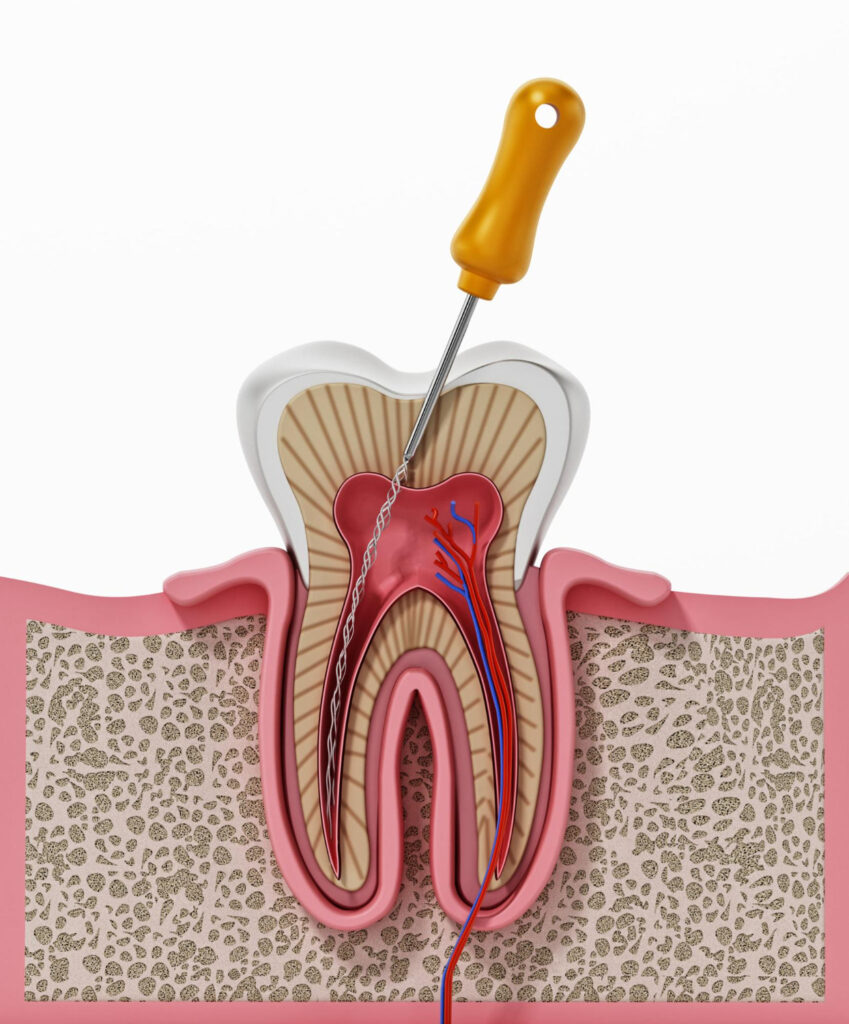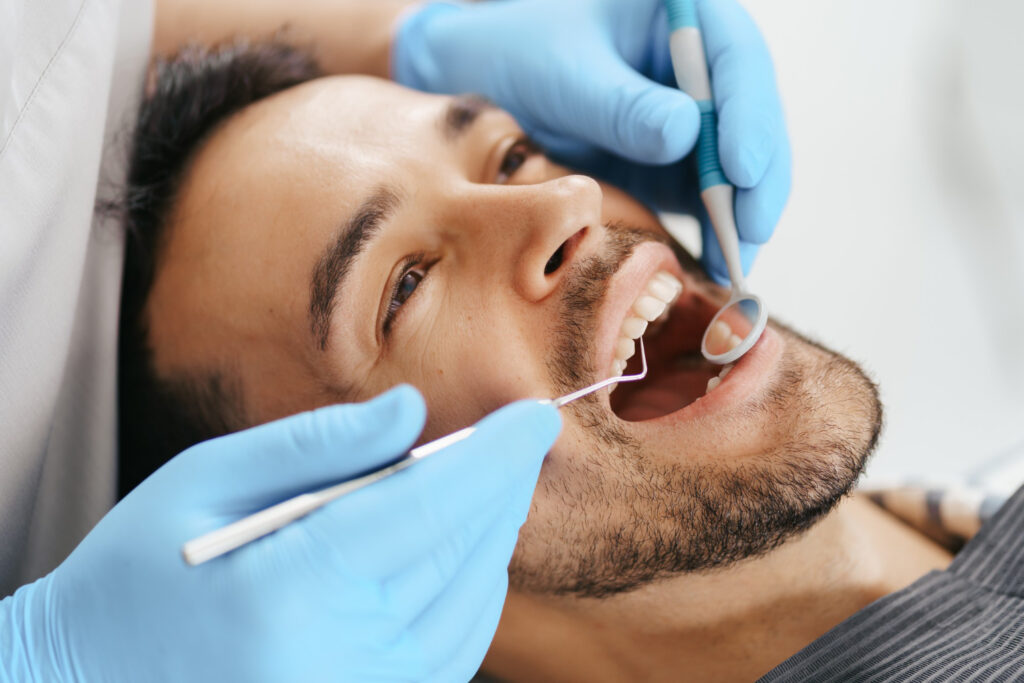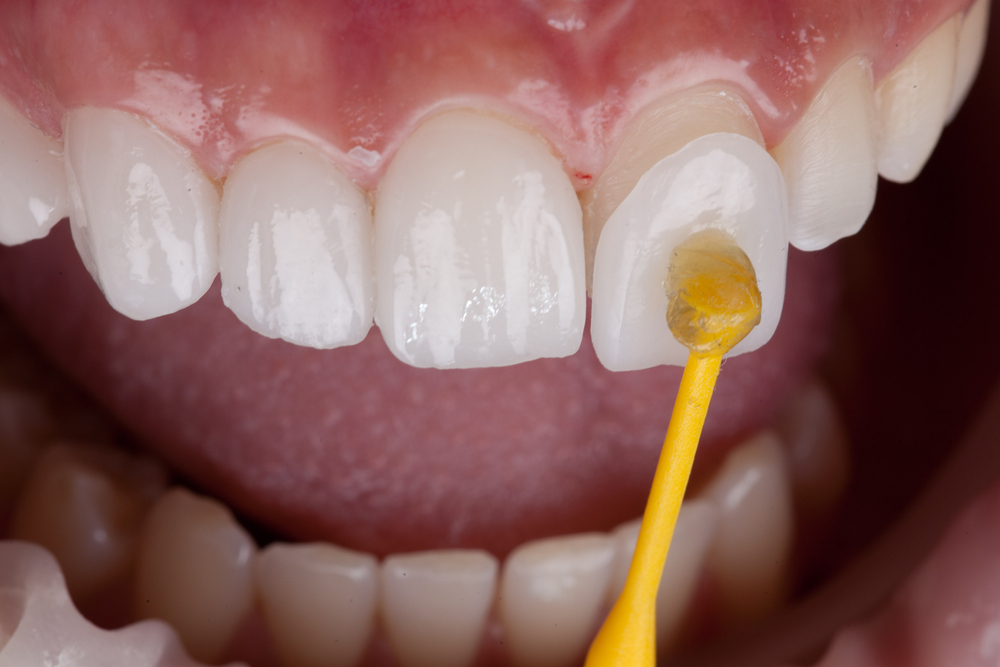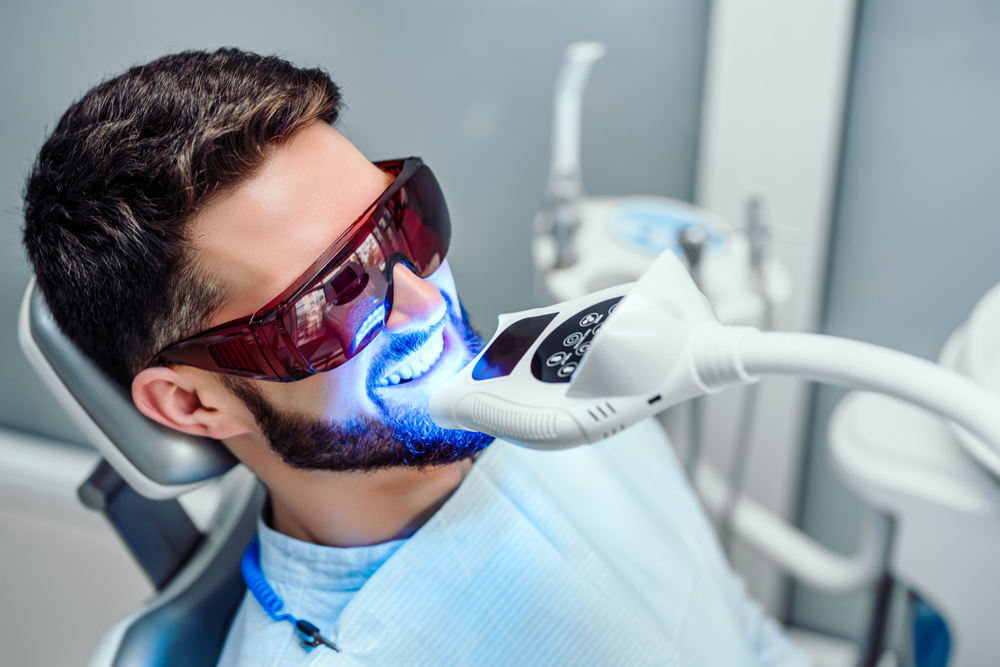Root canals are often mentioned in the context of dental health, usually accompanied by a bit of worry or fear. But what if we told you that a root canal isn’t something to fear, but rather a shining beacon of dentistry? In this article, we’ll explore the true nature of root canal treatment, shedding light on how it saves teeth that are in danger due to decay or infection.
At Smile Science Dental Spa in Glendale, AZ, Dr. Richard Dawson and Dr. John Turke specialize in making dental procedures, including root canals, as comfortable and stress-free as possible. Our goal is to provide you with all the information you need to understand why root canals are often necessary and how they contribute significantly to maintaining your dental health.
What is a Root Canal?

When you hear “root canal,” you’re actually hearing about a lifesaving procedure for your teeth. A root canal, or endodontic therapy, is a treatment used to repair and save a tooth that is badly decayed or infected.
Here’s a simple way to understand it: Inside every tooth, there’s a soft area known as the pulp, which contains nerves and blood vessels. When a tooth is cracked, has a deep cavity, or is otherwise compromised, bacteria can enter the pulp. If left untreated, this can lead to infection, or even form an abscess, which is a swollen area within the tissue that contains a collection of pus. This is where the root canal comes in.
During a root canal procedure, the infected or damaged pulp is removed. After the pulp is taken out, the inside of the tooth is carefully cleaned and disinfected, then filled and sealed. Think of it like clearing out a bad infection and sealing it up to protect it. This process eliminates the pain and saves the tooth from further decay or extraction.
Many people get nervous about root canals because they’re worried it will hurt. However, with modern techniques and anesthesia, a root canal is usually no more uncomfortable than getting a filling. In fact, it’s meant to relieve pain, not cause it.
Understanding this procedure is crucial in demystifying root canals. It’s not something to be feared, but rather a crucial procedure in dental care, helping to prevent tooth decay and the spread of infection, ultimately saving your tooth from being lost. At Smile Science Dental Spa, we ensure that this procedure, like all others, is carried out with the utmost care and professionalism, making your dental health our top priority.
The Causes of Tooth Decay and Infection
Tooth decay and infection are the main reasons why someone might need a root canal. But how do these issues start? Most of the time, they begin with something we all know we should do but sometimes skip: good oral hygiene. Brushing, flossing, and regular dental check-ups play a huge role in keeping our teeth healthy.
When we don’t take care of our teeth properly, plaque, a sticky film of bacteria, builds up on our teeth. This plaque produces acids that can erode tooth enamel, leading to cavities. If these cavities aren’t treated, they can grow deeper into the tooth, reaching the pulp. This is where the problem becomes serious. The pulp, full of nerves and blood vessels, can get infected by the bacteria, causing pain and swelling.
Other factors contributing to tooth decay and infection include frequent snacking on sugary foods and drinks, not getting enough fluoride, and even some health conditions like diabetes. It’s not just about brushing and flossing; it’s also about maintaining a healthy diet and attending regular dental check-ups to catch problems early.
At Smile Science Dental Spa, we emphasize the importance of preventive dental care to avoid the kind of decay and infection that leads to root canals. By understanding the causes, we can take steps to prevent tooth decay and keep our smiles healthy.
Symptoms: When Do You Need a Root Canal?

Knowing when you might need a root canal is key to getting timely dental care. Here are some signs to look out for:
- Severe Toothache: Pain is often the most noticeable sign. If you have a toothache that gets worse when you bite down or doesn’t go away, it could be a sign of infection.
- Sensitivity to Hot and Cold: If your tooth hurts when you drink hot coffee or eat ice cream, and the pain lingers, it might be more than just a sensitive tooth.
- Swollen, Tender Gums: Swelling or tenderness in the gums near a painful tooth could be a sign of an infection that might need a root canal.
- Discoloration of the Tooth: A tooth that has become discolored, especially a darkening, could indicate damage to the inside of the tooth.
- A Persistent Pimple on the Gums: A pimple-like bump on your gums, known as a dental abscess, can signal an infection that might require a root canal.
It’s important to remember that not all tooth infections show symptoms. That’s why regular dental check-ups at Smile Science Dental Spa are crucial. Dr. Richard Dawson and Dr. John Turke can spot the signs of tooth decay and infection early on, making treatment easier and less invasive.
If you experience any of these symptoms, it’s important to see a dentist as soon as possible. Ignoring the signs can lead to more serious issues, including the spread of infection. At our practice, we ensure that each patient receives the care they need in a comfortable and understanding environment, helping you maintain a healthy, pain-free smile.
The Root Canal Procedure: Step by Step
Understanding the root canal procedure can help alleviate fears and misconceptions about this important dental treatment. Here’s a step-by-step breakdown of what happens during a root canal at Smile Science Dental Spa:
- Diagnosis and X-ray: First, our dentists, Dr. Dawson and Dr. Turke, will examine your tooth and take an X-ray to determine the extent of the damage.
- Local Anesthesia: To ensure you are comfortable and pain-free, a local anesthetic will be administered to numb the tooth and surrounding area.
- Pulpectomy: A small opening is made in the crown of the tooth to access the infected or damaged pulp.
- Removing the Pulp: The pulp, which is the cause of the pain and infection, is carefully removed from the pulp chamber and root canals.
- Cleaning and Shaping: The now-empty canals are thoroughly cleaned, disinfected, and shaped. This step is crucial to prepare the tooth for filling.
- Filling the Canals: The cleaned canals are filled with a biocompatible material, usually a rubber-like substance called gutta-percha, to seal them off.
- Sealing the Tooth: A temporary or permanent filling material is used to close the opening in the tooth. In some cases, a crown may be recommended to provide additional protection and strength to the tooth.
- Aftercare: Post-procedure care is essential. We will provide you with instructions on how to care for your treated tooth.
This process might sound complex, but it’s a routine procedure that can be completed in one or two visits, depending on the condition of your tooth. Most importantly, it relieves pain and saves your natural tooth.
Demystifying Root Canal Myths
There are many myths surrounding root canals that can cause unnecessary anxiety. Let’s clear up some common misconceptions:
- Myth: Root canals are extremely painful.
Reality: With modern techniques and anesthesia, root canals are usually no more painful than getting a filling. - Myth: It’s better to pull a tooth than have a root canal.
Reality: Saving your natural tooth, if possible, is always the best option. Root canals allow you to keep your tooth. Dental implants have come a long way, but they are still inferior to a natural tooth. - Myth: Root canals cause illness.
Reality: There is no scientific evidence linking successful and properly maintained root canals to other health problems. In fact, the procedure eliminates bacteria from the infected part of the tooth. However, it is important to have root canal treated teeth examined regularly, to ensure no re-infection occurs. Because the nerve of the tooth was removed, infection can re-emerge undetected and cause low-levels of localized, and potentially systemic bacteremia, for years. - Myth: Root canals don’t last long.
Reality: With proper care, a tooth that has undergone a root canal can last a lifetime.
At Smile Science Dental Spa, we understand that knowledge is key to comfort. We’re here to provide you with accurate information and quality care, ensuring your dental health is in the best hands. If you have any concerns or questions about root canal treatment, Dr. Dawson and Dr. Turke are more than happy to address them, ensuring you have a clear and comfortable experience.
Post-Procedure Care and Dental Health

After undergoing a root canal procedure, the right post-procedure care is essential to ensure the success and longevity of the treatment. At Smile Science Dental Spa, we guide our patients through every step of the recovery process. Here are some tips for post-root canal care:
- Manage Discomfort: Some tenderness or discomfort is normal after the procedure. Over-the-counter pain relievers, as recommended by your dentist, can help.
- Avoid Chewing on the Treated Side: Until your tooth is fully restored, avoid chewing on the treated side to prevent recontamination and allow the area to heal.
- Maintain Good Oral Hygiene: Continue with your regular brushing and flossing routine, but be gentle around the treated area.
- Avoid Hard or Chewy Foods: To protect your tooth, steer clear of hard or chewy foods that might cause damage.
- Follow-Up Appointments: Keep any follow-up appointments with your dentist to ensure proper healing and to complete any additional necessary treatments, such as the placement of a crown.
- Watch for Unusual Symptoms: If you experience significant pain, swelling, or other unusual symptoms, contact your dentist immediately.
Remember, a tooth after a root canal might be more fragile than other teeth. Taking these steps helps ensure a smooth recovery and preserves your tooth for years to come.
Preventing Tooth Decay: Oral Hygiene Tips

Preventing tooth decay is crucial in reducing the likelihood of needing a root canal. Here are some oral hygiene tips from Smile Science Dental Spa to help you maintain a healthy smile:
- Brush Regularly: Brush your teeth twice a day for two minutes with fluoride toothpaste. This helps remove plaque and bacteria.
- Floss Daily: Flossing once a day helps remove food particles and plaque between teeth where a toothbrush can’t reach.
- Use Mouthwash: An antibacterial mouthwash can help reduce bacteria in your mouth and freshen breath.
- Eat a Balanced Diet: Limit sugary and acidic foods and drinks, as they contribute to tooth decay.
- Regular Dental Check-Ups: Visit your dentist regularly for cleanings and check-ups. These visits are crucial for catching problems early.
- Consider Dental Sealants: Ask your dentist about sealants, which can provide a protective barrier against decay.
- Stay Hydrated: Drinking water throughout the day helps wash away food particles and bacteria.
By following these tips, you can keep your teeth and gums healthy, reducing the risk of decay and the need for treatments like root canals. Remember, preventive care is the best care, and we at Smile Science Dental Spa are here to help you every step of the way.
Alternatives to Root Canals: What Are Your Options?
While root canals are a common and effective way to treat infected or decayed teeth, they’re not the only option available. At Smile Science Dental Spa, we understand the importance of personalized dental care, and sometimes, other treatments may be more suitable. Here are some alternatives to root canals:
- Dental Fillings: If tooth decay hasn’t reached the pulp, a simple filling might be enough. This involves removing the decay and filling the cavity. Be warned though, if you can feel the cavity, it may be too late.
- Dental Crowns: For more significant decay without pulp infection, a crown might be appropriate. It involves capping the damaged tooth with a custom-fitted covering. As with fillings however, if the tooth is painful, it may already be too late.
- Tooth Extraction: In cases where the tooth is too damaged to save, extraction might be necessary. This involves removing the tooth entirely and can be followed by a dental implant or bridge to replace the missing tooth.
- Pulp Capping: If the decay is close to the pulp but hasn’t infected it, a procedure called pulp capping can be used to protect the pulp from infection. Your dentist will let you know when they think pulp capping may be appropriate.
Each of these alternatives has its own set of indications, advantages, and considerations. Dr. Richard Dawson and Dr. John Turke at Smile Science Dental Spa can help determine the best treatment option for your specific dental needs.
The Role of Regular Dental Check-Ups

The importance of regular dental check-ups cannot be overstated. These visits play a crucial role in maintaining oral health and preventing serious dental issues, including those that might require a root canal. Here’s why they’re so important:
- Early Detection: Regular check-ups allow for the early detection of problems like cavities, gum disease, and even early stages of tooth decay.
- Professional Cleaning: Dental check-ups usually include a professional cleaning, which removes plaque and tartar that regular brushing can’t.
- Tailored Dental Advice: Regular visits provide an opportunity to get personalized advice on oral hygiene, diet, and other factors affecting dental health.
- Preventative Care: Dentists can spot potential issues and take steps to prevent them from becoming serious problems.
- Oral Cancer Screening: Regular check-ups often include screening for signs of oral cancer, which is crucial for early detection.
- Maintaining Overall Health: Dental health is closely linked to overall health. Regular dental check-ups can help keep your entire body healthier.
Remember, prevention is always better than cure. Regular check-ups at Smile Science Dental Spa can save you time, discomfort, and expense by catching and addressing issues before they escalate. Dr. Dawson and Dr. Turke are dedicated to providing comprehensive care to ensure your long-term oral health.
Embracing Dental Health: A Holistic Approach to Oral Well-being
In the journey of maintaining and improving our overall health, dental health plays a critical role that often goes underappreciated. Embracing dental health means understanding and recognizing the importance of treatments like root canals, not just as isolated procedures, but as integral parts of a comprehensive approach to oral well-being.
Dental health is much more than just avoiding cavities or making our teeth look aesthetically pleasing. It’s about ensuring the functionality and longevity of our teeth, keeping our gums healthy, and recognizing the impact oral health has on our overall well-being. Treatments like root canals embody this philosophy. They aren’t just fixes for current problems; they’re preventive measures against future complications, preserving natural teeth and maintaining the integrity of our oral health.
Moreover, embracing dental health is about regular care and maintenance. It’s about adopting healthy oral hygiene practices, making informed dietary choices, and understanding the significance of regular dental check-ups. It’s a commitment to proactive care, where prevention and early intervention are key.
Your Dental Health Partners: Smile Science Dental Spa
At Smile Science Dental Spa in Glendale, AZ, we recognize the importance of a patient-first approach in dental care. Under the expert care of general dentists Dr. Richard Dawson and Dr. John Turke, our clinic offers a full spectrum of dental treatments tailored to meet the unique needs of each patient.
We believe that every visit to the dentist should be a comfortable, informative, and positive experience. Our team is committed to providing not just treatment, but education and guidance to empower our patients in their journey towards optimal dental health. Whether it’s a routine check-up, a complex procedure like a root canal, or any other dental treatment, our focus is always on delivering the highest standard of care.
Your oral health is a vital part of your overall health, and at Smile Science Dental Spa, we’re dedicated to helping you maintain it. We invite you to join us in embracing a holistic approach to dental health, where your comfort, well-being, and smile are always our top priorities.






